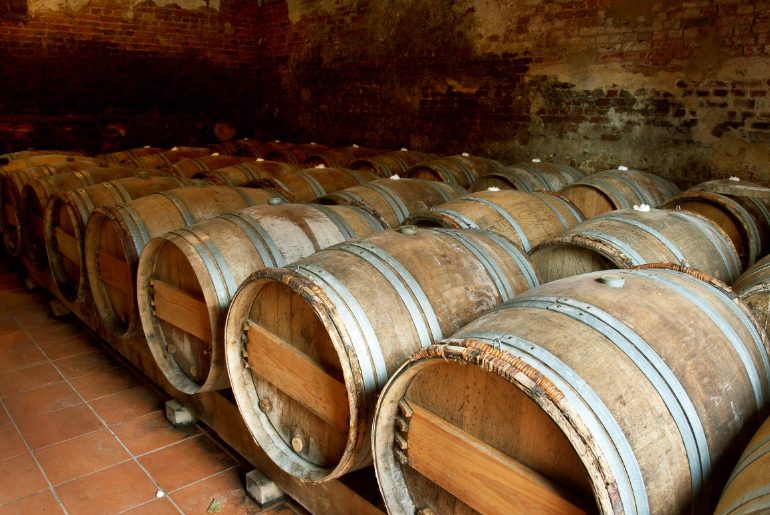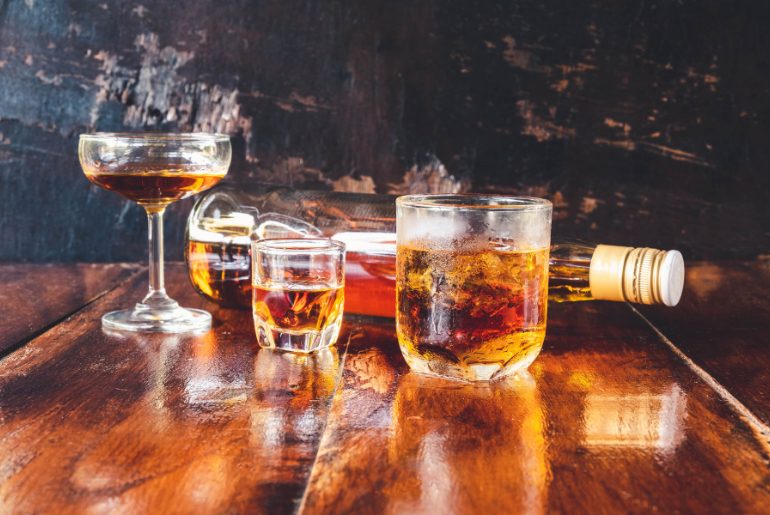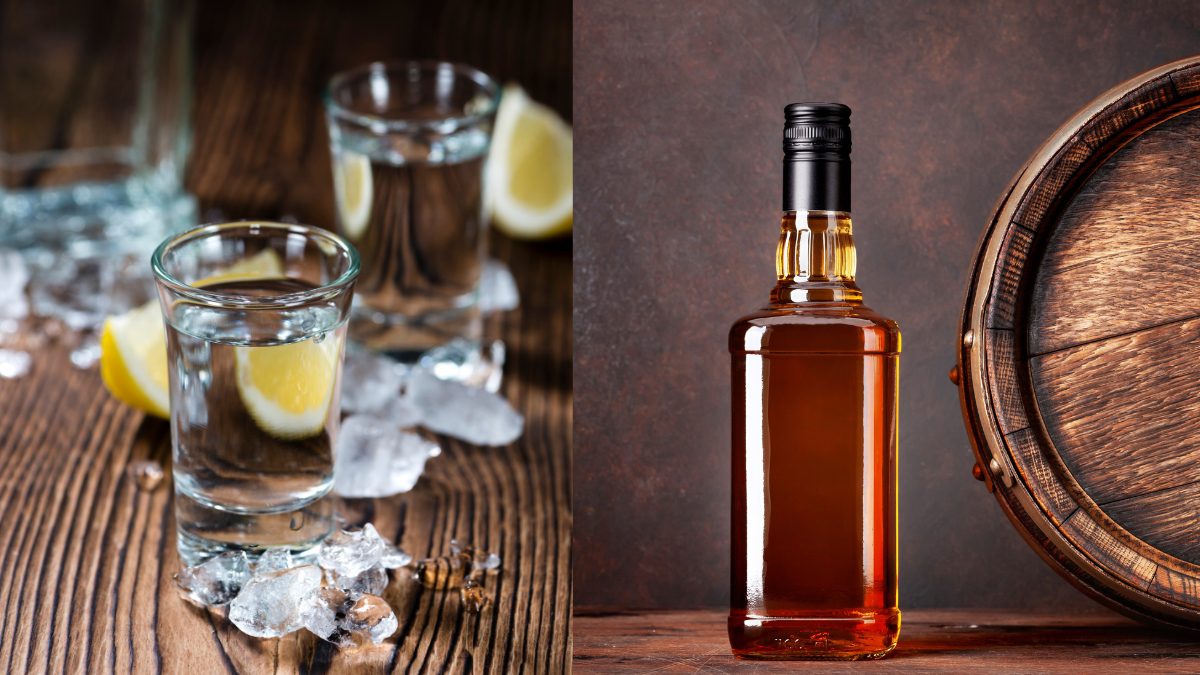In the world of spirits, they all start as clear as water. But then something magical happens. Imagine them like wizards in barrels, soaking up colours and flavours as they age. So, what’s the secret behind their vibrant hues? It’s all about the wood they’re aged in and a few special compounds inside. As they cosy up in wooden barrels, these liquors pick up tannins, lignins, and vanillin from the wood, which gives them their unique colours and tastes. It’s like a potion slowly brewing in a special oak cauldron, turning from clear to that warm, inviting amber or golden hue we love.
What Lends Liquors That Fascinating Colour?

If all liquors start as clear or colourless liquids, what lends them their vibrant hues? The transformation from this initial clarity to the rich spectrum of colours in liquors like whisky, rum, and brandy is primarily attributed to ageing and the influence of various factors during this process.
Ageing, a pivotal stage in the production of many spirits, contributes significantly to their colouration. The ageing process involves storing the distilled liquor in wooden barrels, typically made of oak. These barrels are more than mere storage vessels; they act as catalysts for change. Over time, the liquor interacts with the wood, absorbing compounds from the barrel itself. One crucial element imparting colour is the extraction of compounds like tannins, lignins, and vanillin from the oak.
The Gradual Shift From Clear To Amber

Tannins, found in wood, bring about a golden to amber hue. They’re polyphenolic compounds that also exist in grapes, tea, and other plants. During ageing, the liquor slowly seeps into the wood, extracting these tannins along with other flavour compounds.
Lignins, another constituent of wood, also influence colour development. As the liquor permeates the barrel, it absorbs lignins, contributing to deeper, richer hues. Additionally, vanillin, a compound responsible for the vanilla-like aroma and flavour, also plays a role. Over time, the liquor absorbs vanillin from the oak, which adds to the taste profile and contributes to the spirit’s colour.
Also Read: What Is Buon Natale, Kerala’s Christmas Fiesta Where Thousands Of Santas Come Together?
The Art And Science Behind Spectacular Spirits

Beyond ageing in oak barrels, other factors influence liquor colouration. The raw materials used in production, such as grains, fruits, or molasses, can impact the eventual colour of the spirit. For instance, the choice of barley or corn in whisky production can influence the final hue. Moreover, the distillation process, including the temperature and duration, affects the extraction and retention of compounds that contribute to colour.
Environmental factors like temperature and humidity in the ageing location also influence development. Fluctuations in these conditions cause the liquor to expand and contract within the barrel, facilitating greater interaction with the wood and intensifying the colouration process.
In summary, while all liquors start clear, the ageing process in wooden barrels, coupled with the extraction of compounds like tannins, lignins, and vanillin from the oak, is chiefly responsible for their distinctive colours.
Sip by sip, each colour tells a story woven by time, wood, and a touch of magic, making every drink a vibrant adventure.
Cover Image Courtesy: Canva
For more such snackable content, interesting discoveries and latest updates on food, travel and experiences in your city, download the Curly Tales App. Download HERE.
Good news! We are on WhatsApp! Subscribe to Curly Tales WhatsApp Channel to stay up-to-date with exclusive content and BTS. Join HERE.
First Published: November 27, 2023 7:33 PM



